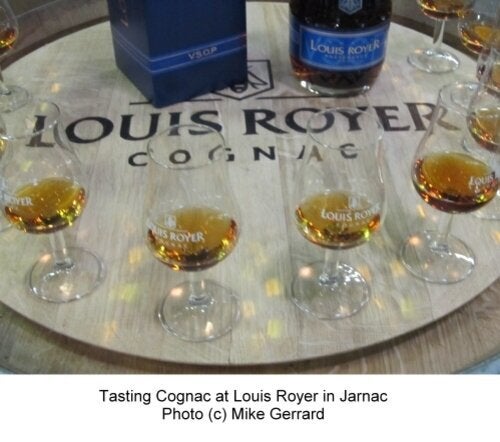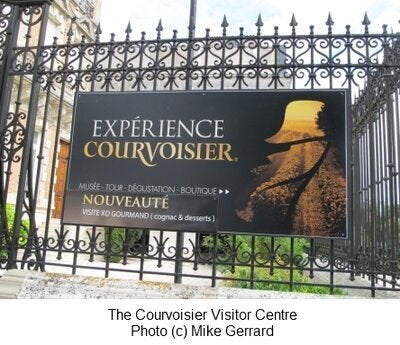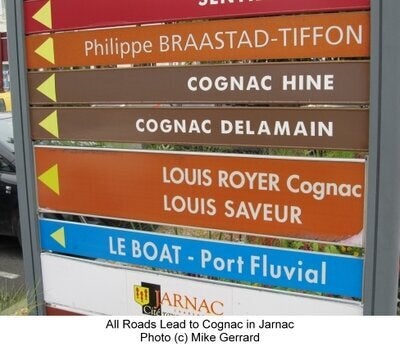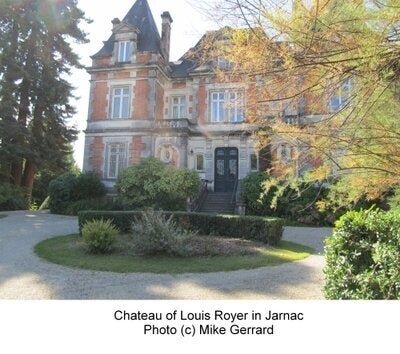
The name of its neighbour a few miles away is literally on the lips of spirits drinkers around the world, but the pretty little town of Jarnac in western France is also worth raising a glass to. Like that better-known neighbour, Cognac, it lies on the Charente river, which flows leisurely from the forested Limousin region down to the Atlantic Ocean 240 miles away at Rochefort. And, like Cognac, Jarnac is home to some of the world's most famous cognac houses including Hine, Louis Royer and Courvoisier.
They all owe their existence to that river, to a few accidents of nature, and to men - and till recently it was almost exclusively men - who combined business acumen with an obsessive dedication to producing the finest examples of one particular drink, cognac. Cognac is generally considered to be the finest brandy in the world, and only cognac made in quite specific ways in the Cognac region of France can carry the name.

While it was the French who perfected cognac, it was, rather surprisingly, the Dutch who invented brandy. Wine from France, including the Cognac region, would be taken in barrels down to the Atlantic ports and transported around the world. The Dutch at the time were the dominant seafaring nation, and when it was discovered that wine didn't always travel well by sea, the Dutch companies came up with the bright idea of concentrating the wine by distillation at source.
It was thought that this fortified wine might travel better, and when it reached its destination the original wine could be recreated by simply adding back the water that distillation had driven off. However, many people preferred not to mix a little water with the wine and enjoyed the fortified version just as it was. It had been called 'burnt wine', or brandwijn in Dutch. Brandy was born.
Sometime in the 17th century, some unknown genius in the Cognac region had the bright idea of trying to intensify the flavour even more by distilling the distilled wine a second time. Cognac was created. Stored in barrels that arrived by river from the forests of Limousin, the cognac tasted even better. The grapes in the area don't make great wine, but they do make great cognac.
Napoleon Bonaparte enjoyed his brandy, and the brandy he enjoyed the most comes from Jarnac, though the company only moved here in the early 19th century. It's now known as Courvoisier, though in some parts of the world Courvoisier is still called Napoleon Brandy for both historic and linguistic reasons. Asian tongues may enjoy the tipple but cannot wrap themselves around the name of Courvoisier.

To confirm the connection, a small museum dedicated to Napoleon is housed in Courvoisier's impressive chateau, which stands by the Charente in the very centre of Jarnac. Outside, mallards and their families might be sharing the river with leisure craft, but inside at Courvoisier curious visitors are peering at a lock of Napoleon's hair, looking at his luggage, his hat and his raincoat.
On the Courvoisier tour I learn that, surprisingly, over 60% of the cognac drunk in the world is diluted, with water, ice cubes or in cocktails. I'd always assumed that cognac was a sacred drink to be enjoyed neat or not at all. But no. Some cognacs are better for being diluted, and only the very finest should be sipped and savoured on their own. It seems the French think the same way I do - or did do, till I came to Courvoisier - that cognac is not an everyday drink but is for very special occasions. Only 3% of the cognac Courvoisier makes is sold in France.
At the end of the tour we're offered a chance to not only try several Courvoisier cognacs but also a cocktail, mixing Courvoisier with ginger ale. Till the moment I tried it I would have thought that was sacrilege. Mix Courvoisier with ginger ale?? Then I try it and discover a very refreshing long drink which blends the spiciness of the ginger ale with some of the floral and vanilla flavours of the cognac. I'm convinced. If you can mix gin with tonic or scotch with soda, you can mix cognac with ginger ale.

My admiration for cognac makers increases when I also visit Louis Royer, whose distillery sits further along the Charente in Jarnac in a spot where, on this day, the wide and deep blue river has a canal-like serenity as it flows between thick strands of bushy green trees. Here the museum contains not a lock of Napoleon's hair but a small model of the modest house in which the company founder, Louis Royer, was born in 1828. If you pop outside the museum you can see the rather grander chateau that Royer built just along the street from his birthplace when the success of the cognac firm he founded at the age of 25 paid off.

The company is still run by a direct descendant of the founder, Jérome Royer, who also serves as the mayor of Jarnac, and in whatever spare time he manages to find is a bee-keeper too. It's another tradition handed down through the generations, as the company's symbol is the bee and they firmly believe that the presence and the power of the bees influences the flavours of their cognacs.

Louis Royer is better-known in the USA than in the UK. In the States they make the strongest cognac on the market, a potent LR Force 53, which is 53% ABV compared to a typical cognac strength of 40-45%. It was made this way so that it can be drunk watered down, and can also be used in cocktails without losing the potency and aromatic flavour of the original cognac. One of the winners in a cocktail competition the company organised in the USA was called A Taste of Mexico and brilliantly blended LR Force 53 with agave and lime.
My advice? A visit to Cognac blended with a generous helping of time in Jarnac makes the perfect cognac cocktail.
FURTHER INFORMATION
2 place du Château, Jarnac
Open April - October, daily (closed Saturdays in May and September)
27-29 rue du Chail, Jarnac
Open July and August, from Wednesday to Friday, from 10am to 12am and 2pm to 6pm (7pm on Saturday). From 2pm to 7pm on Sunday.
Tours of the Cognac and Jarnac distilleries can be arranged through www.cognac-tasting-tour.fr
You can also visit Cognac with Arblaster and Clarke or take a city break in Bordeaux, about 75 miles south of Jarnac, with Kirker Holidays.
Mike Gerrard is an award-winning travel writer. You can see his online portfolio at Contently.